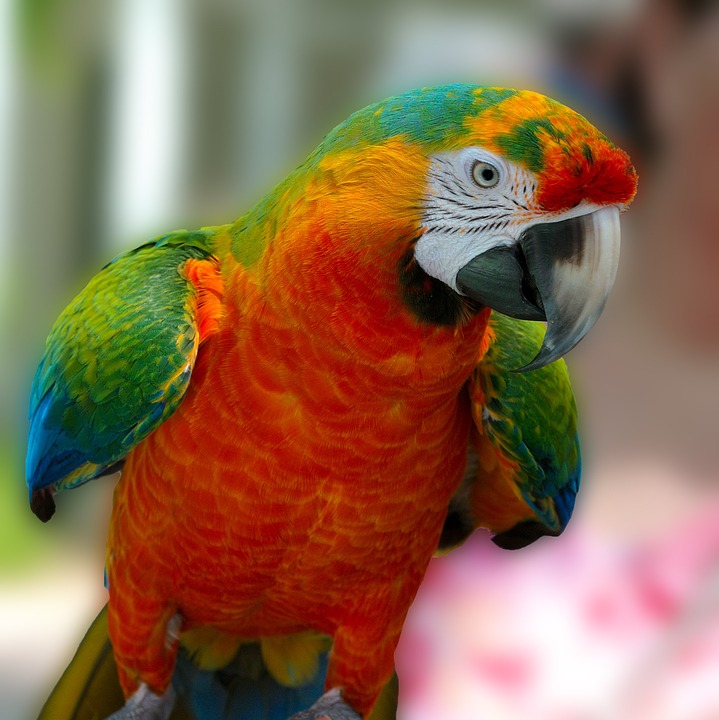Welcome to our comprehensive guide on teaching your parrot to target a stick or finger! Target training is an essential skill that enhances your parrot’s cognitive abilities, strengthens the bond between you and your feathered friend, and promotes positive behaviors. In this article, we will walk you through the step-by-step process of training your parrot to target a stick or finger, while also exploring some common FAQs related to parrot training.
**1. The Importance of Target Training for Parrots:**
Target training serves as the foundation for teaching various tricks and behaviors to parrots. It enables parrots to focus their attention, enhances their problem-solving skills, and encourages mental stimulation. Target training also aids in managing fear or aggression-related issues, and it can be a useful tool for redirecting unwanted behaviors.
**2. Understanding the Targeting Concept:**
Target training involves teaching your parrot to touch a designated object, typically a stick or your finger, upon command. By associating a specific behavior, such as touching the target, with a positive reward, you establish a clear communication method with your parrot. This allows you to guide and shape their behaviors effectively.
**3. Step-by-Step Guide to Teaching Your Parrot to Target:**
**a. Choosing the Right Target Object:**
Select a target object that is easily distinguishable and safe for your parrot to interact with. Ideally, choose a stick or a dowel rod that has a distinct color or shape. Ensure that it doesn’t contain harmful substances or sharp edges.
**b. Establishing a Positive Reinforcement System:**
Determine the rewards that motivate your parrot, such as favorite treats or verbal praise. These rewards will serve as positive reinforcement during the training process. Make sure to use small, bite-sized treats to avoid overfeeding your parrot.
**c. Introducing the Target Object:**
Present the target object to your parrot without any expectations or commands. Allow them to explore and investigate the object at their own pace. This step helps familiarize your parrot with the target and creates a positive association.
**d. Encouraging Initial Interactions:**
Hold the target object near your parrot’s beak and use a verbal cue, such as “touch” or “target,” while they investigate it. As soon as your parrot makes any contact with the target, offer a reward and praise them enthusiastically. Repeat this process several times to reinforce the association between the verbal cue, the action, and the reward.
**e. Shaping the Targeting Behavior:**
Gradually increase the criteria for the desired behavior. Start requiring your parrot to touch the target for a longer duration or from different angles. As they become more proficient, introduce slight movements or different locations for targeting. Always reward successful attempts and provide gentle guidance when needed.
**f. Reinforcing and Generalizing the Training:**
Consistently reinforce the targeting behavior by rewarding your parrot each time they successfully touch the target. Once your parrot is proficient, start introducing the command “target” or any other cue you prefer. Practice targeting in various environments and gradually reduce the reliance on treats, replacing them with verbal praise or other forms of positive reinforcement.
**4. Frequently Asked Questions (FAQs):**
**Q1: Can any parrot species be target trained?**
A1: Yes, target training is suitable for almost all parrot species, regardless of their size or age. It is a versatile training method that can be customized to accommodate different birds’ abilities and learning styles.
**Q2: How long does it usually take to train a parrot to target?**
A2: The training duration varies depending on the individual parrot’s learning pace, prior training experience, and the consistency of training sessions. Some parrots may pick up the targeting behavior within a few sessions, while others may require weeks or even months to master it fully.
**Q3: Can target training help with behavior issues like biting or aggression?**
A3: Target training can be an effective tool for redirecting and managing undesirable behaviors. By focusing your parrot’s attention on the target and rewarding positive interactions, you can help reduce biting, aggression, or fear-related behaviors. However, it is important to address the underlying causes of these issues and seek professional guidance if necessary.
**Q4: Can I target train my parrot without using treats?**
A4: While treats are commonly used as a form of positive reinforcement during target training, you can gradually reduce their dependence by incorporating other rewards, such as verbal praise, head scratches, or access to preferred toys or activities. Adapt the training to suit your parrot’s preferences and motivations.
In conclusion, target training is an invaluable skill that empowers parrots to learn, communicate, and engage in positive behaviors. By following our step-by-step guide, you can establish a solid foundation for target training while strengthening the bond with your feathered companion. Remember, patience, consistency, and positive reinforcement are key to successful parrot training. Happy targeting!









